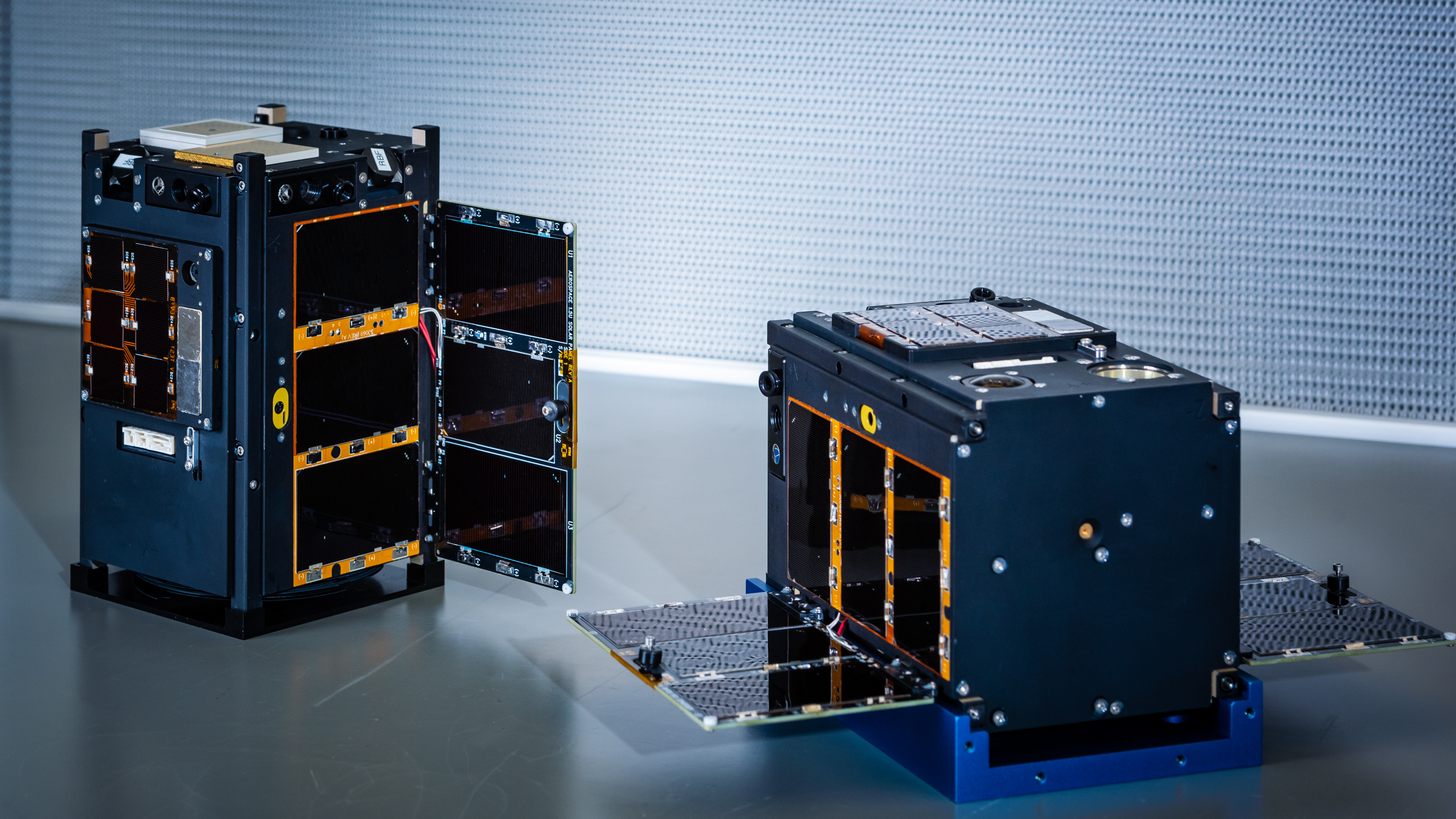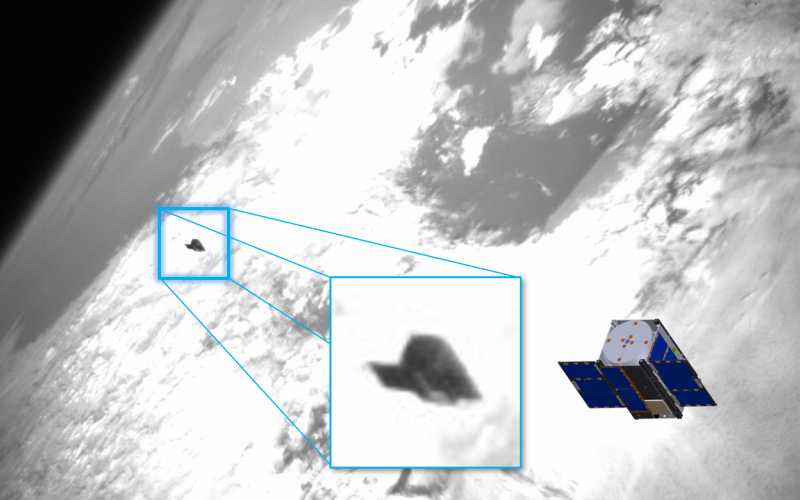With some technical panache, one of The Aerospace Corporation’s CubeSats maneuvered itself within 22 meters of its sibling CubeSat and snapped a series of photos while orbiting at 17,000 miles per hour.
This incredibly difficult technology demonstration, performed by a satellite the size of a tissue box, paves the way for future inspection or servicing missions.
“AeroCube-10 is by far the smallest spacecraft to have accomplished a rendezvous and proximity operation so close,” said Catherine Venturini, an Aerospace Senior Project Leader and team lead for the AeroCube-10 mission. “This operation has successfully demonstrated that the future is open for very small and cost-effective spacecraft to perform on-orbit inspection (and potentially servicing) missions, to participate in science missions that require close proximity, and ultimately to advance to docking scenarios so that nanosatellites can join in the struggle to remove space debris from orbit.”
AeroCube-10 is a pair of 1.5U CubeSats (10 x 10 x 15 cm), one carrying a set of 28 deployable atmospheric probes and a laser beacon, and the other a camera and a propulsion system, which enables it to control its movements.
“AC-10B’s largest payload is the propulsion unit, a warm-gas thruster that provides small changes in velocity and enables formation keeping and proximity operations with respect to AC-10A, which cannot maneuver,” explained Joseph Gangestad, Systems Director and experiment lead. “The propulsion unit uses water as a propellant and can provide up to a total of 6 m/s of velocity change over the mission’s life.”
Although satellites in low Earth orbit move very quickly with respect to the ground, two satellites in nearly the same orbit and nearby may seem to move very slowly relative to each other (much like two cars speeding down a highway at the same speed but in adjacent lanes). In this relative motion, one satellite can even appear to “orbit” around another.
AC-10B entered this kind of “orbit” around AC-10A with a radius of 30 x 60 meters and used its on-board camera to take resolved images of AC-10A while orbiting from maximum to minimum range. During another close approach, AC-10B was able to take photos from a mere 22 meters away.

“Making this feat possible required ingenuity across the entire team of Aerospace engineers who contributed to the design, build, and operations of AeroCube-10,” Gangestad said. “The satellites feature a GPS receiver that can pinpoint the satellites’ location to within single-digit meters even while barreling through space at 17,000 miles per hour, a propulsion system that can impart changes in velocity as delicate as four thousandths of an inch per second, an attitude control system that can point the satellites within fractions of a degree, a ground network of communications antennas that provide regular connectivity to the satellites, and mission planning tools that can model and predict the satellites’ behavior hours and days into the future with extreme precision.”
Precise proximity operations are necessary for some of AeroCube-10’s science missions, which require spatial separation between the two CubeSats. AeroCube-10's missions include advancing the maturity of nanosatellite-scale technologies and capabilities, studying the Earth’s atmosphere via the release of small probes, and studying the radiation environment of the Earth’s ionosphere.
Beyond its current tasks, however, AeroCube-10 demonstrates a cost-effective capability that could be used in potential future missions.
As Gangestad put it, “The miniaturized technologies and sophisticated processes used to accomplish this proximity operation can be applied to other spacecraft and missions, so that future projects — such as free-flying inspector satellites for the International Space Station — can be accomplished in a small form factor and lower cost.”







